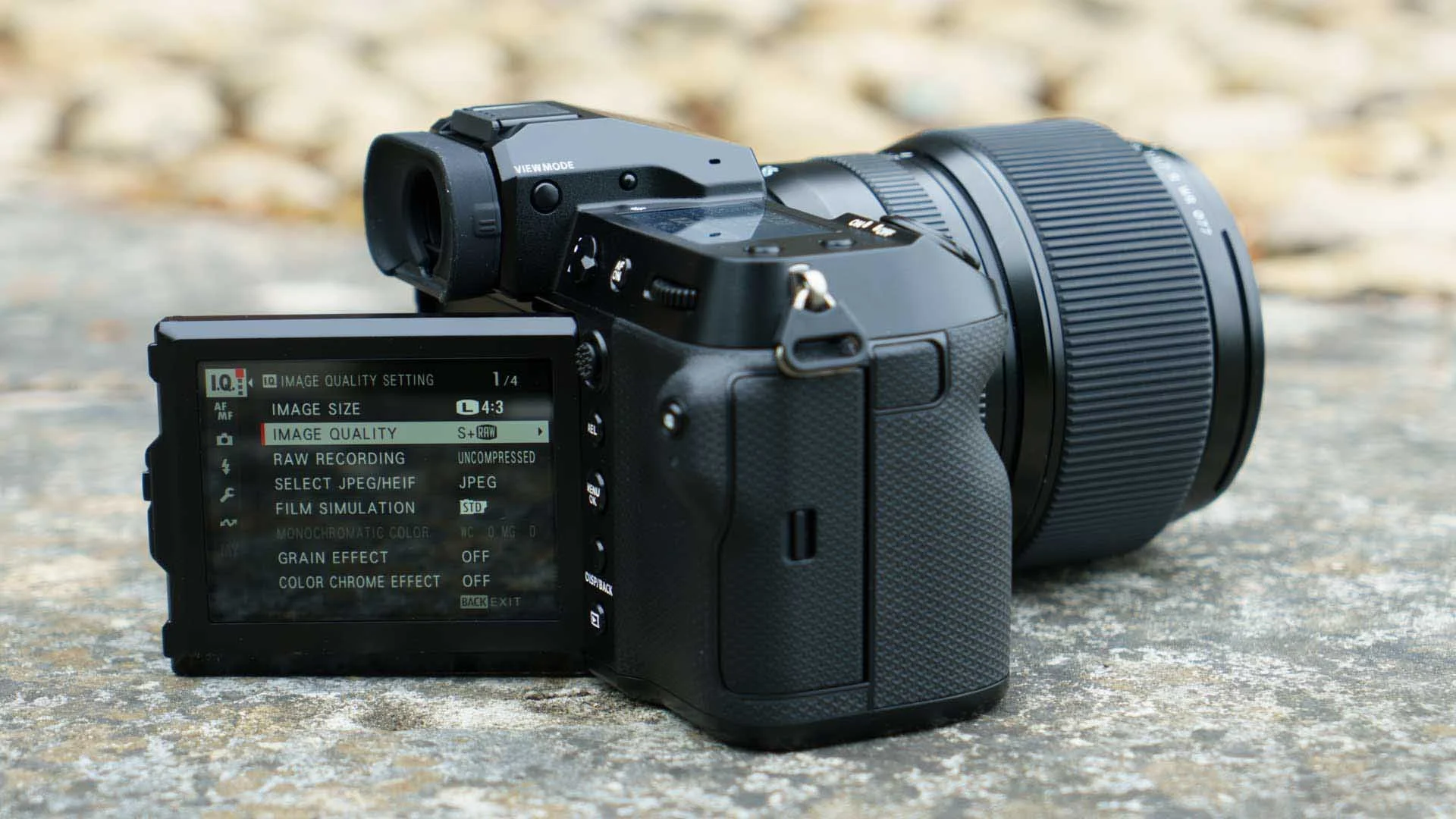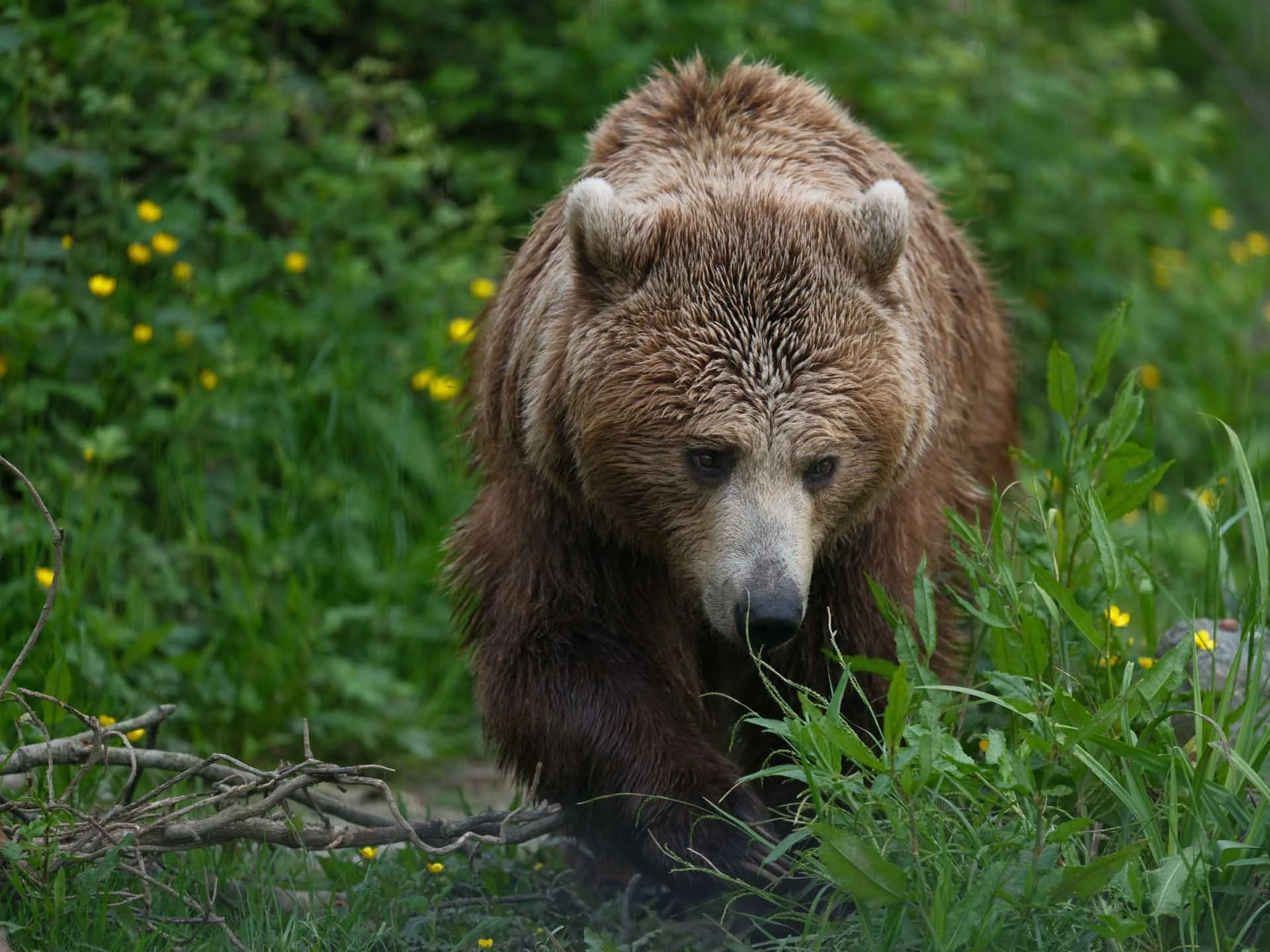Fujifilm GFX100S II Hands-on Review
Summary Verdict
Smaller, lighter and more affordable than the GFX100 II, the Fujifilm GFX100S II has excellent specifications and great handling. It responds more like a small format camera than what we used to expect from a medium format camera, and it’s capable of producing superb images with detail you can keep zooming into
Score: TBC
For
102MP backside-illuminated sensor
Phase detection autofocusing with subject detection
Weatherproof
Against
Heavyweight system
No 8K video capability
Doesn’t have a stacked sensor like the GFX100 II
What is the Fujifilm GFX100S II?
The Fujifilm GFX100S II is a medium-format mirrorless camera. It has a new 102MP backside-illuminated (BSI) sensor that measures 43.8 x 32.9mm, which means it is 1.7x the size of a full-frame sensor like the one found in the Canon R6 Mark II. This is paired with the X Processor 5, the same processing engine as is in the GFX100 II.
Fujifilm now has just two current GFX cameras, the GFX100S II and the GFX100 II. The GFX100S II sits below the flagship GFX100 II in Fujifilm’s GFX line-up, and at 883g, it’s the lighter of the two cameras in the current series.
Read our Fujifilm GFX100RF Review
Fujifilm GFX100S II Price and Availability
The Fujifilm GFX100S II will be available on 17 June 2024 for £4999 / $4999 / €5499 (body only).
Fujifilm GFX100S II Key Specifications
Camera type: Medium format mirrorless
Announced: 16th May 2024
Sensor: 102MP Medium format (43.8 x 32.9mm) BSI CMOS with Bayer colour filter array
Processor: X Processor 5
Lens mount: Fujifilm G
Autofocus system: Intelligent Hybrid AF (contrast AF / phase-detection AF) with up to 425 selectable AF points
Subject Detection AF: Human Eye/Face or Animal, Bird, Automobile, Motorcycle & Bike, Airplane, Train
Viewfinder: 5.76-million-dot OLED with 0.84x magnifications
Screen: 3-direction tilting 3.2-inch, 2.36million-dot touchscreen
Maximum Continuous Shooting rate: 7fps
Sensitivity range: Stills: ISO 80-12,800 expandable to ISO 40-102,400, Video: ISO 100-12,800 expandable ISO 25,600
Image stabilisation: In-body 5-axis giving 8EV compensation
Key video specifications: 4K at 30P, 1080 at up to 60P, 4:2:2 10-bit colour, F-Log, F-Log2, Built-in Frame.IO connectivity, ProRes and BlackMagic Raw via Micro HDMI
Film Simulation Modes: 20 modes: Provia/Standard, Velvia/Vivid, Astia/Soft, Classic Chrome, Reala Ace, Pro Neg.Hi, Pro Neg.Std Classic Neg., Nostalgic Neg., Eterna/Cinema, Eterna Beach Bypass, Acros, Acros + Ye Filter, Acros + R Filter, Acros + G Filter, Black & White, Black & White + Ye Filter, Black & White + R Filter, Black & White + G Filter, Sepia
Storage: 2x SD/SDHC/SDXC UHS-II
Dimensions W x H X D: 150.0 x 104.2 x 44.0 mm
Weight: 883g
The Fujifilm GFX100S II’s screen can be tilted up or down in landscape and portrait orientation.
Features
Although the Fujifilm GFX100S II has the same pixel count as the GFX100 II announced in September 2023, it doesn’t use the same sensor. The GFX100 II has a GFX 102MP CMOS II HS sensor, while the GFX100S II has a GFX 102MP CMOS II sensor - losing the HS indicates that its readout isn’t as fast. This means that although you’re likely to get the same image quality, the maximum continuous shooting rate maxes out at 7fps (frames per second) rather than 8fps, and the autofocus system and subject detection system won’t be quite so responsive.
The sensitive range, however, is the same as the GFX100 II at ISO 80-12,800, expandable to ISO 40-102,400. There’s also a 5-axis in-body image stabilisation system (IBIS) that offers up to 8 stops of shutter speed compensation.
In comparison with the GFX100S, the GFX100S II gains a better autofocus system, complete with a comprehensive subject detection system that can be set to detect animals, birds, automobiles, motorcycles and bikes, aeroplanes, and trains. There’s also an additional Film Simulation Mode, Reala Ace, taking the total count to 20. Plus, the Pixel-Shift Multi-Shot technology enables the camera to capture images that can be combined to create 400MP images.
While the Fujifilm GFX100S II has a more than respectable video specification for a medium format camera, it can’t match the 8K capability of the GFX100 II. It can record 4K video at up to 30P and 1080P at up to 60P with 4:2:2 10-bit colour. F-Log and F-Log 2 are also available for capturing flat footage with greater dynamic range and more scope for grading, plus ProRes or BlackMagic Raw footage can be recorded to an external device via the Micro HDMI connection.
The Fujifilm GFX100S II has a substantial grip that gives plenty of room for your fingers.
Build and Handling
Fujifilm has used the same body and control layout for the GFX100S II as it did for the GFX100S, which means it measures 150.0 x 104.2 x 44.0 mm. However, the weight has been reduced to 883g with a battery and memory card, down from 900g.
There’s no getting away from the fact that the GFX100S II is a big camera, which is an inevitable consequence of such a large sensor. However, it’s smaller than a double-gripped full-frame camera like the Canon EOS R3, which measures 150.0 x 142,6 x 87.2 mm and weighs 1015 g.
Of course, the camera's weight only tells part of the story; there are the lenses to contend with too. Having a bigger-than-average sensor means that the GFX100S II requires big lenses, too. However, it’s not unwieldy. Anyone who shoots with a lightweight system such as an X-T50 or a Micro Four Thirds camera such as the OM System OM-5 II will find the increase in weight very noticeable, but I found it manageable. I spent several hours shooting with the GFX100S II with the new GF500mmF5.6 R LM OIS WR mounted. At 1,375g, that’s light for its focal length (equivalent to 396mm on a full-frame camera) and format, but it meant a combined weight of 2,258 g. I carried the camera on a Peak Design Slide Lite strap across my body and I didn’t get sore or feel unduly fatigued - although I am pretty used to carrying a lot of kit. I was carrying the Fujifilm X-T50 with an XF 70-300mm f4-5.6 R LM OIS WR mounted the other way across my body, and I had the new Fujifilm XF16-50mmF2.8-4.8 R LM WR kit lens in my jacket pocket for good measure.
What’s immediately apparent when you pick up the GFX100S II, is how well shaped it is. It fits perfectly in my hand, with plenty of room for my fingers on the grip and the shutter release within easy reach. Meanwhile, the nobbly joystick falls perfectly under my thumb.
The Fujifilm GFX100S II has the same BISHAMON-TEX™ textured coating as the GFX100 II and it gives good purchase.
Fujifilm GFX100S II Viewfinder and Screen
While Fujifilm has used the same 3.2-inch 2.36-million-dot tilting screen on the GFX100S II as is on the original GFX100S, the 0.5-inch viewfinder has had a significant upgrade with the resolution rising to 5.37-million-dots from 3.69-million.
The screen is mounted on a 3-way tilting mechanism, which means it can be angled to give a clear view whether you’re shooting in landscape or portrait orientation. It’s capable of showing a good level of detail, but the viewfinder is the more natural choice for composing images, particularly when shooting outside.
There’s a good amount of space for your thumb on the back of the Fujifilm GFX100S II and the joystick is perfectly positioned.
Performance
With 102 million pixels on its sensor, the Fujifilm GFX100S II is capable of resolving a huge amount of detail. It also creates very large images that, at 300ppi, make prints measuring 98.62 x 73.96cm or 38.8 x 29.1 inches.
Noise is also very well controlled, although it’s worth considering the image's potential use when deciding how high you’re prepared to push the setting. The noise is hidden more successfully in a smaller print or at smaller viewing sizes, so if you’re going to print to a maximum of A3 size, you can afford to use a higher setting than you might want to if you're making 1 metre wide prints.
It’s also worth shooting raw files and processing them to find the right balance between noise removal and detail preservation. For example, I got a better balance with an ISO 4000 raw file by using Adobe Camera Raw’s AI Noise Reduction than the camera produces using its default noise reduction settings for a Jpeg.
So far, the highest ISO setting I have used is ISO 5000 and the results look very good, especially the raw files.
The GFX100S II’s autofocus (AF) system doesn’t perform how we traditionally expect a medium-format camera’s AF system to perform. It’s much better. It’s fast and responsive. The subject detection system is also very useful, but it naturally struggled when shooting through the wire fencing around the enclosures at a safari park. In many cases, it got it bang-on; in some instances, the focus is correct, but the contrast is reduced by the wire, and the image doesn’t look bitingly sharp. Given a clear sight of its subject, however, the system delivers.
I’ve yet to point the GFX100 II at any vehicles or insects, but the Face/Eye detection for humans and the animal detection works very well. If the animal is distant, the camera usually puts a box around it to indicate it’s identified it and it’s the focus target. As the eyes become more clearly visible, it puts small boxes over them to let you know they’re the focus target.
The colours from the GFX100S II are typically Fujifilm and there are 20 Film Simulation modes to choose from. This can sometimes be tricky as there are likely to be several that would suit a scene or subject, but it’s easy to swap between them and tweak the results further to get exactly what you want when you’re processing the raw files. The colours are baked in for the Jpegs, though, so if you only want to make minor edits post-capture, it’s worth running through the options a few times to find which ones you like best. Thankfully, the viewfinder and screen provide a good preview so you can be guided by what you see when you’re selecting the Film Simulation Mode and white balance settings.
Similarly, the viewfinder provides an excellent preview of the exposure. These days, I rarely move away from the default metering settings, as most cameras give a great preview, and you can rely on the evidence of your eyes when you set the exposure settings.
Fujifilm GFX100S II Sample Images
These images were captured using a full-product Fujifilm GFX100S II with a beta-sample GF 500mm F5.6 R LM OIS WR lens, so image quality may vary from those captured using production-grade lenses.
Image Credit: Angela Nicholson The subject detection was set to detect animals, and it didn’t skip a beat with this subject.
Image Credit: Angela Nicholson With the sun falling fast, this image was shot at ISO 1600 and the noise is controlled well.
Image Credit: Angela Nicholson This image shows how shallow the depth of field is with the GF500mm F5.6 R LM OIS WR lens at maximum aperture.
Image Credit: Angela Nicholson At this distance, the Fujifilm GFX100S II can’t detect the zebra’s eyes but it can spot and track the animal itself.
Image Credit: Angela Nicholson Despite the flare of the sun, the camera was able to detect the wildebeest and did a great job of handling the exposure.
Image Credit: Angela Nicholson This brown bear was photographed through a dense wire fence at ISO 800, but there’s still an impressive amount of detail in the fur and eyes.
Image Credit: Angela Nicholson This image was shot at f/11 to get the whole of the flower sharp.
Image Credit: Angela Nicholson Shooting downhill with the aperture wide open to f/5.6 has created something of a miniaturised effect.
Image Credit: Angela Nicholson. This ISO 1600 image could use a contrast boost thanks to the impact of shooting through a cage, but it’s perfectly in focus, and there’s a good level of detail visible.
Image Credit: Angela Nicholson. The enhanced version of the image above.
Early Verdict
Although the Fujifilm GFX100S II’s subject detection system isn’t quite as snappy as the GFX100 II’s, it’s still very good and useful in many situations. In reality, the GFX100S II will most likely be used more often for shooting portraits and social events rather than sport or wildlife, but a few hours at a safari park have proved that it’s possible, especially when the camera is paired with the new GF500mmF5.6 R LM OIS WR lens.
While the GFX100S II doesn’t have as impressive a video capability as the GFX100 II, it has more than enough to interest occasional video shooters.
I have more testing to do, but so far, the Fujifilm GFX100S II appears to be an exciting proposition for anyone looking to invest in a medium format camera that doesn’t have to stay within the confines of a studio and tethered to lights.















